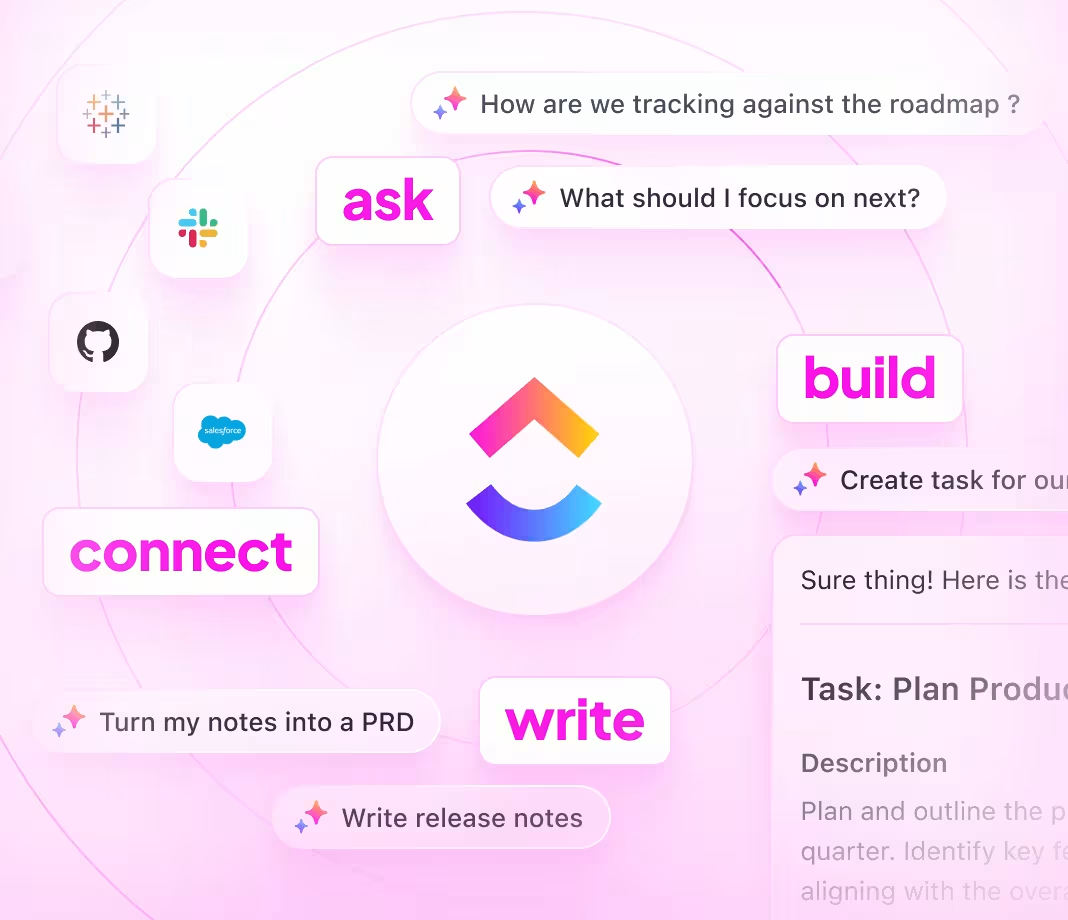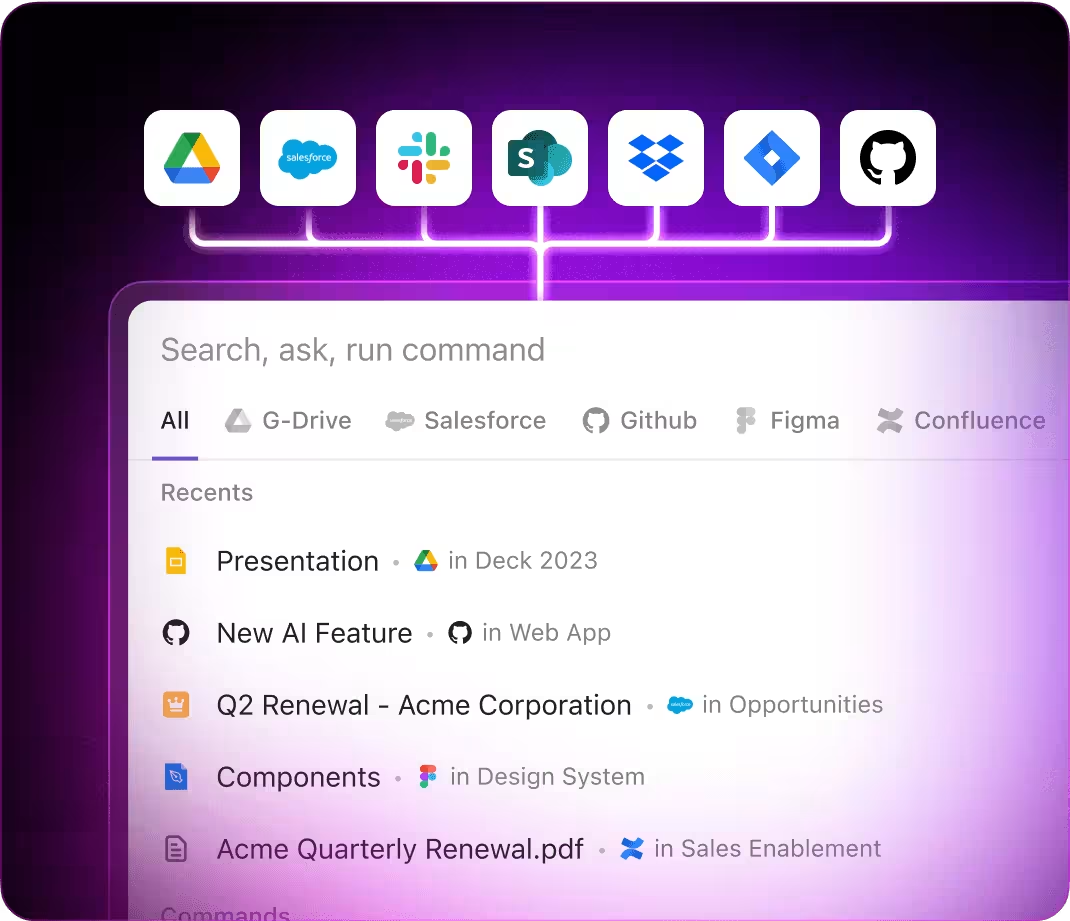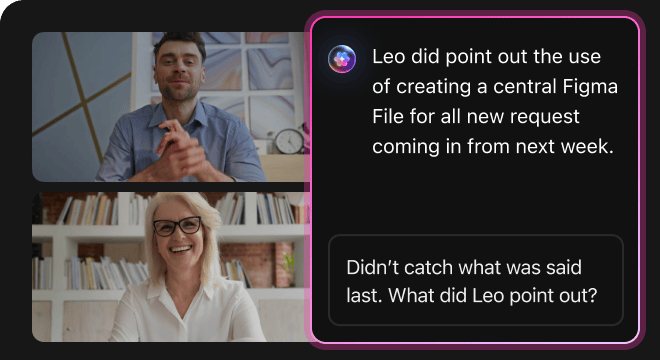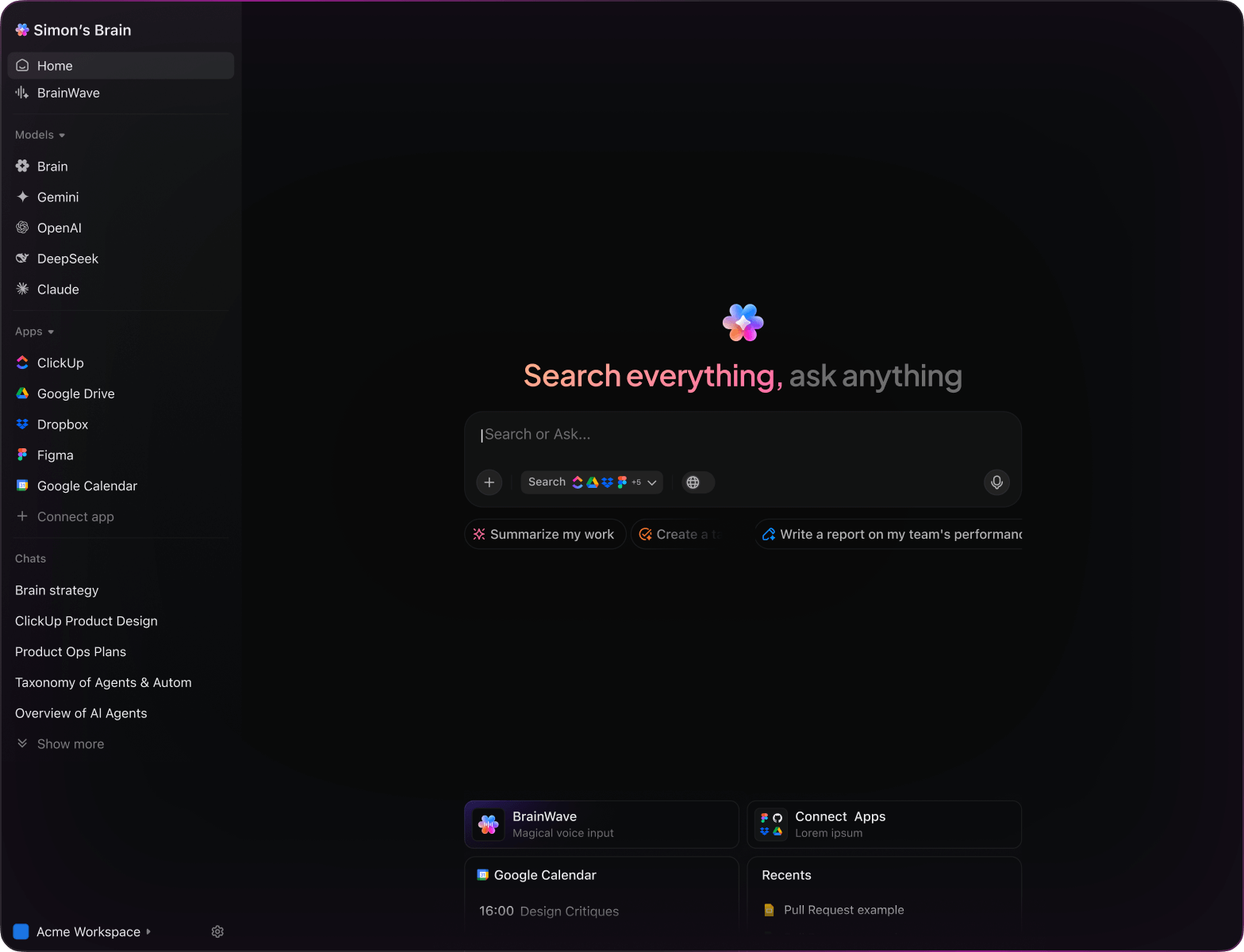AI Research Writing
Top AI Prompts for Research Writing
Enhance your research projects, organize insights, and elevate your academic writing with ClickUp Brain.

Trusted by the world’s leading businesses
AI Empowering Research Teams
Revolutionizing Research Writing with AI Prompts in ClickUp Brain
Crafting impactful research papers involves more than just gathering data—it demands clarity, structure, and precision.
From brainstorming hypotheses to drafting sections, managing citations, and finalizing manuscripts, research writing encompasses numerous steps and tight deadlines. AI prompts are now pivotal in simplifying this complex process.
Researchers leverage AI to:
- Quickly identify relevant literature and emerging trends
- Generate initial drafts, summaries, and structured outlines effortlessly
- Decode dense academic texts and extract key insights
- Transform scattered notes into organized checklists and action items
Integrated within familiar tools like documents, whiteboards, and task boards, AI in ClickUp Brain acts as a smart collaborator, converting your ideas into clear, manageable tasks that drive your research forward.
ClickUp Brain Compared to Conventional Solutions
Discover How ClickUp Brain Elevates Research Writing
ClickUp Brain integrates seamlessly, understands your context deeply, and empowers you to focus on writing rather than setup.
Conventional AI Assistants
- Constantly toggling between apps to collect background
- Repeating your research objectives with every query
- Receiving generic, irrelevant suggestions
- Hunting through multiple platforms for a single document
- Interacting with AI that lacks proactive engagement
- Manually choosing between different AI engines
- Merely a browser add-on without integration
ClickUp Brain
- Instantly accesses your research projects, notes, and collaborator inputs
- Retains your writing progress and research aims
- Provides insightful, context-driven guidance
- Searches across all your research assets in one place
- Enables hands-free input with Talk to Text
- Automatically selects the optimal AI model: GPT, Claude, Gemini
- Dedicated desktop application for Mac & Windows optimized for performance
Research Writing Prompts
15 Essential AI Prompts for Research Writing with ClickUp Brain
Accelerate your research process—drafting, analysis, and collaboration simplified.

Identify 5 innovative thesis topics in environmental science based on the ‘Climate Change 2024’ document.
ClickUp Brain Behaviour: Analyzes key themes and emerging ideas from the linked document to suggest compelling research topics.

What are the current methodologies trending in qualitative social science research under $50K budgets?
ClickUp Brain Behavior: Integrates insights from internal project reports; Brain Max can supplement with relevant external studies if accessible.

Draft a research proposal outline for a study on urban biodiversity, referencing ‘Field Notes #12’ and previous grant applications.
ClickUp Brain Behavior: Extracts pertinent data and textual elements from linked files to construct a structured proposal draft.

Summarize comparative findings on data collection techniques between surveys and interviews from the ‘Methods Review Q1’ document.
ClickUp Brain Behavior: Retrieves and condenses tabular and narrative information from internal documents into a clear comparison summary.

List predominant statistical software used in epidemiology research, referencing R&D logs and software evaluation reports.
ClickUp Brain Behavior: Scans internal documents to identify frequently mentioned tools and their performance notes.

From the ‘Ethics Approval Process’ document, generate a checklist for compliance requirements.
ClickUp Brain Behavior: Detects criteria and formats them into an actionable checklist within a task or document.

Summarize 3 emerging trends in digital humanities research from post-2023 conference proceedings and review papers.
ClickUp Brain Behavior: Extracts recurring themes and insights from linked academic sources and notes.

From the ‘Graduate Student Survey 2024’ document, summarize key preferences for collaborative writing tools.
ClickUp Brain Behavior: Analyzes survey data to highlight common feedback and design preferences.

Compose engaging and concise abstract text for a paper on renewable energy adoption using the style guide in ‘WritingTone.pdf’.
ClickUp Brain Behavior: References tone guidelines to propose varied abstract drafts suited for academic audiences.

Summarize recent changes in data privacy regulations affecting research data management and their implications.
ClickUp Brain Behavior: Condenses linked compliance documents; Brain Max can include updates if public resources are added.

Generate formatting and citation guidelines for APA style referencing, referencing institutional policy documents.
ClickUp Brain Behavior: Extracts rules and examples from internal documents to create a comprehensive citation checklist.

Create a peer review checklist based on the ‘Journal Submission Guidelines 2025’ and prior editorial notes.
ClickUp Brain Behavior: Identifies key review criteria and organizes them into structured tasks grouped by manuscript sections.

Compare data visualization techniques used in recent psychology, economics, and biology studies using our competitive analysis files.
ClickUp Brain Behavior: Summarizes documented comparisons into an accessible format (summary/table).

What are the emerging themes in interdisciplinary research since 2022?
ClickUp Brain Behavior: Synthesizes trends from internal literature reviews, project summaries, and uploaded reports.

Summarize key challenges in participant recruitment from the Southeast Asia fieldwork feedback folder (demographics, incentives, communication).
ClickUp Brain Behavior: Extracts and prioritizes participant-reported issues across surveys, feedback notes, and tagged communications.
Accelerate Research Writing with ClickUp Brain
Cut down revisions, unify your team’s efforts, and produce superior research drafts using AI-enhanced workflows.






LLMs vs. Workflow Intelligence: How ClickUp Brain Enhances Research Writing
Discover How ChatGPT, Gemini, Gemini, and Perplexity Support Academic Research Tasks
Prompts for ChatGPT
- Condense these qualitative interview transcripts into a 5-point summary highlighting key themes.
- Compose an abstract for a research paper on renewable energy adoption emphasizing impact and innovation.
- Generate 3 alternative hypotheses for a study on urban air quality and outline their implications.
- Draft a detailed methodology workflow for conducting a mixed-methods social science study.
- Compare findings from the last 3 literature reviews and summarize major gaps for future research.
Prompts for Gemini
- Develop 3 alternative data visualization concepts for presenting survey results effectively.
- List innovative approaches to qualitative coding with a focus on reliability and validity.
- Create a thematic map description for a sociological study highlighting key variables and relationships.
- Suggest participant recruitment strategies for a longitudinal study and rank them by feasibility.
- Build a comparison table of three statistical analysis methods focusing on assumptions, strengths, and limitations.
Prompts for Perplexity
- Identify 5 emerging trends in academic publishing and evaluate their impact on research dissemination.
- Provide a comparison of open-access journals in environmental science, highlighting impact factors and fees.
- Summarize global policies on data sharing in clinical trials and their compliance rates.
- Generate a list of 5 effective note-taking techniques for systematic reviews and rank by efficiency.
- Compare past meta-analyses on climate change effects and summarize key methodological lessons.
Prompts for ClickUp Brain
- Transform this research team discussion into clear action items with assigned responsibilities and deadlines.
- Summarize meeting minutes from the grant proposal planning session and create follow-up tasks.
- Analyze annotated draft manuscripts and generate a checklist of revisions needed before submission.
- Create a prioritized task list from this interdisciplinary collaboration on data analysis methods.
- Summarize peer review feedback transcripts and develop actionable editing and response tasks within ClickUp.
Why Choose ClickUp
Transform Your Research Notes Into Clear Drafts
- Convert scattered research points into polished manuscripts quickly.
- Generate innovative hypotheses by analyzing previous studies.
- Develop standardized templates to accelerate your writing process.
Brain Max Boost: Effortlessly access earlier papers, reviewer comments, and data sets to fuel your upcoming research projects.

Why ClickUp Works for Research
Accelerate Research Writing Workflows
- Break down intricate research ideas into manageable tasks.
- Transform study notes into structured, assignable action items.
- Automatically create summaries and progress reports without extra effort.
Brain Max Boost: Instantly access previous study data, citation links, or methodology details across your projects.

AI Advantages
Transform Your Research Writing with AI-Powered Prompts
AI prompts accelerate discovery and elevate the quality of your academic papers.
Produce Fresh Research Ideas Quickly
Researchers explore novel hypotheses rapidly, refine their focus effectively, and overcome writer’s block.
Enhance Analytical Accuracy
Make informed interpretations, reduce errors, and craft arguments that resonate with peers and reviewers.
Identify Gaps Before Submission
Detect inconsistencies early, improve manuscript quality, and shorten revision cycles.
Align Teams Across Disciplines
Facilitates clear communication, harmonizes objectives, and accelerates consensus among collaborators.
Drive Innovative Scholarship
Inspire groundbreaking insights, advance theoretical frameworks, and maintain a competitive edge.
Integrated AI Support Within ClickUp
Transforms AI suggestions into actionable tasks, keeping your research moving forward efficiently.
Boost Your Research Writing Efficiency
Minimize mistakes, enhance collaboration, and generate insightful content with AI-powered support.





